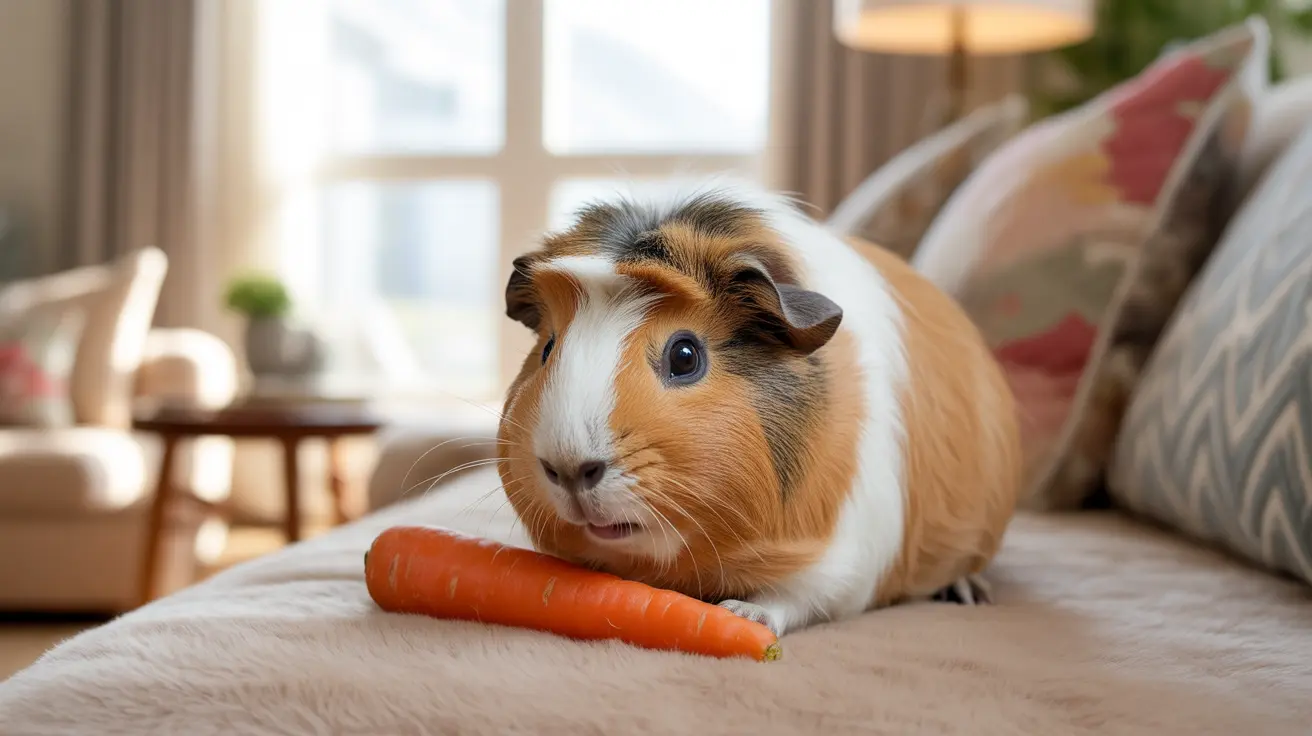When Is a Child Ready for a Pet: A Complete Parent's Guide to Choosing the Right Animal Companion
Deciding when a child is ready for a pet is one of the most important decisions parents face, as it affects not only your family's daily routine but also the wellbeing of a living creature. The question of when is a child ready for a pet goes beyond simply wanting a furry friend – it involves assessing maturity levels, family circumstances, and long-term commitment capabilities.
Understanding the right timing and approach to pet ownership can transform this decision from overwhelming to rewarding. With 60% of pet-owning households in the UK having either a dog or a cat, and countless families enjoying smaller companions like rabbits, guinea pigs, and birds, the benefits of childhood pet ownership are well-documented. However, success depends entirely on proper preparation, realistic expectations, and choosing the right animal for your specific family situation.
Assessing Your Child's Readiness for Pet Ownership
Understanding Age-Appropriate Expectations
The foundation of successful pet ownership begins with understanding what children can realistically handle at different developmental stages. Children under five often struggle with understanding how to treat pets gently, making it best to wait until they can take on some responsibility. This doesn't mean younger children can't interact with pets, but rather that parents must maintain primary responsibility for the animal's welfare.
Children under six should never be left alone with pets due to undeveloped motor skills and limited ability to recognize animal needs. However, they can gradually help with simple tasks like filling water bowls or helping to scatter food under close supervision. The key is ensuring that pets are never treated as toys but respected as living beings requiring consistent care and compassion.
Evaluating Family Readiness Beyond Age
Determining when is a child ready for a pet requires parents to honestly assess several critical factors beyond their child's age. Time availability stands as perhaps the most crucial consideration – pets require daily attention including feeding, cleaning, grooming, and health checks. Busy family schedules must accommodate these non-negotiable needs, regardless of other commitments.
Space considerations play an equally important role in readiness assessment. Different animals require varying amounts of living space, from small habitats for guinea pigs to yards for active dog breeds. Financial preparedness involves budgeting not just for initial pet costs, but ongoing expenses including food, veterinary care, and emergency medical treatment. Insurance options are available for many pets, but monthly premiums and potential health costs should be factored into long-term planning.
Choosing the Right Pet for Different Age Groups
Early Childhood (Ages 4-7): Starting Small
For families wondering when is a child ready for a pet in the early childhood years, starting with less demanding animals often proves most successful. Parakeets offer an excellent introduction to pet ownership, being relatively low maintenance while still providing affection and interaction. These intelligent birds can learn words and respond to their owners, making them engaging companions that don't require the intensive daily care of mammals.
Crested geckos represent another unique option for this age group, being soft to touch and generally docile. However, their nocturnal nature means children will need to understand that interaction times may be limited to evening hours. Parents should handle the majority of care responsibilities while teaching children proper gentle handling techniques and respect for the animal's needs.
Middle Childhood (Ages 8-11): Increasing Responsibility
As children develop better motor skills and understanding of consequences, more interactive pets become appropriate choices. Guinea pigs excel in this age range due to their calm temperament and social nature. These gentle animals are interactive and social, requiring companionship from other guinea pigs, which teaches children about animal social needs while providing multiple pets to observe and care for.
Rats, though often overlooked, make excellent pets for older children in this age group. They're friendly, trainable, and highly intelligent, forming genuine bonds with their owners. Their approximately two-year lifespan, while shorter than some pets, allows families to experience the complete pet lifecycle without the decade-plus commitment of larger animals. Canaries and finches suit families preferring observation over handling, thriving in groups and providing beautiful songs and interesting behaviors to watch.
Adolescence (Ages 12-15): Full Pet Partnerships
Teenagers can handle the responsibility of larger, more complex pets when family circumstances allow. Rabbits become appropriate at this age, as they're loving companions but require calm handling and active care. Their sensitivity to stress means teenagers must learn to read animal body language and respond appropriately to their pet's emotional needs.
Dogs and cats represent the ultimate pet ownership experience, requiring significant time and financial commitment while offering unparalleled companionship. Children at this age can assist meaningfully with care tasks including training, grooming, and exercise routines. However, parents must remember that the long-term commitment extends well beyond their child's remaining years at home.
Special Considerations for Pet Selection
Managing Allergies and Health Concerns
Families dealing with allergies need not abandon dreams of pet ownership entirely. Hairless cats, certain dog breeds like Labradors and poodles, fish, turtles, and snakes generally produce fewer allergens and may accommodate children with sensitivities. However, consultation with allergists and gradual exposure testing should precede any final decisions.
Health considerations extend beyond allergies to include zoonotic disease prevention. Small rodents like mice, gerbils, and hamsters can pose health risks and may be too fragile for young children's handling. Reptiles and amphibians can carry salmonella and require specialized care that may overwhelm beginning pet owners. These factors shouldn't eliminate these animals from consideration but require additional safety education and precautions.
Pets for Children with Special Needs
Children with disabilities often benefit tremendously from pet ownership, with animals promoting physical activity, improving sensory-motor skills, encouraging socialization, managing stress, and boosting mood. The choice depends on the individual child's capabilities and activity level rather than following general age guidelines.
Cats offer particular therapeutic benefits while being relatively easy to care for, making them excellent choices for many special needs situations. Dogs can serve as service or therapy animals, providing both companionship and practical assistance. Fish tanks offer calming visual stimulation with minimal maintenance requirements, while guinea pigs provide social interaction opportunities that can help develop communication skills.
Building Successful Long-Term Pet Relationships
Teaching Empathy and Proper Animal Interaction
Successfully determining when is a child ready for a pet involves preparing them for respectful animal interaction. Children must learn that pets have individual personalities, preferences, and needs that may differ from human desires. Teaching children to recognize signs of animal stress, fear, or discomfort prevents negative interactions and builds genuine empathy.
Practical preparation can begin before pet acquisition through visits to farms, friends' homes with pets, or volunteering opportunities. These experiences allow children to practice gentle handling, learn animal body language, and understand the daily commitment pet ownership requires. Parents can observe their child's natural responses and readiness indicators during these controlled interactions.
Planning for Life Changes and Growth
Long-term commitment challenges require honest family discussions about maintaining pet care as children grow older, develop new interests, or eventually leave home for college. The reality that parents will ultimately bear responsibility for pets throughout their entire lifespan must be acknowledged from the beginning. This doesn't diminish the value of childhood pet ownership but ensures that animals receive consistent care regardless of changing family dynamics.
Financial planning extends beyond initial costs to include regular veterinary care, emergency medical treatment, pet insurance premiums, and end-of-life care expenses. Creating dedicated pet savings accounts or budgeting monthly amounts helps families manage these inevitable costs without financial stress that could negatively impact pet care quality.
Frequently Asked Questions
At what age can a child be solely responsible for a pet's care?
Most children aren't ready for complete pet care responsibility until their teenage years (12-15), and even then, parents should maintain oversight. Younger children can participate in age-appropriate tasks, but adults must ensure all pet needs are consistently met regardless of children's changing interests or schedules.
Which pets are best for teaching responsibility without overwhelming young children?
Guinea pigs and parakeets offer excellent balance for teaching responsibility while remaining manageable for families. Guinea pigs are gentle and social, requiring daily but straightforward care, while parakeets are affectionate and interactive without demanding intensive daily maintenance like larger pets.
How can I tell if my child is mature enough for pet ownership?
Look for consistent completion of age-appropriate chores, gentle treatment of animals during visits or interactions, asking thoughtful questions about animal needs, and showing sustained interest over months rather than impulsive excitement. Children ready for pets demonstrate empathy, follow through on commitments, and understand that animals have needs beyond entertainment.
What should I do if my child loses interest in their pet?
Maintain consistent pet care while exploring reasons for decreased interest. Sometimes children need reminders about routine responsibilities or new ways to interact with their pets. However, parents must be prepared to assume full pet care responsibilities if children's interest wanes, as the animal's welfare cannot depend on children's changing moods.
Are there pets that are completely inappropriate for young children?
Ferrets can be aggressive and are escape artists, making them unsuitable for young children. Small rodents like hamsters can be fragile and nocturnal, while reptiles and amphibians carry salmonella risks and require specialized care. Birds may be too noisy and difficult for young children to handle safely.
How much should I expect to spend on a child's first pet annually?
Costs vary significantly by animal type, but budget for food, bedding, veterinary care, and supplies. Small pets like guinea pigs may cost $200-400 annually, while cats and dogs typically require $500-1500 yearly for basic care, not including emergency medical expenses. Research specific cost requirements for your chosen pet type before committing.
Should I get two pets so they can keep each other company?
Many animals, particularly guinea pigs, rats, and rabbits, are naturally social and benefit from companionship. However, multiple pets double care responsibilities, costs, and space requirements. Consider your family's capacity for managing multiple animals before deciding, and research whether your chosen pet species requires or benefits from companionship.
Conclusion
Determining when is a child ready for a pet requires careful consideration of multiple factors beyond simple age guidelines. Successful pet ownership depends on honest assessment of family readiness, appropriate animal selection, and realistic expectations about long-term commitment. While pets offer tremendous benefits for children's development – teaching responsibility, providing companionship, and building empathy – these advantages only emerge when families are properly prepared for the realities of animal care.
Remember that pets are living beings requiring consistent care throughout their entire lifespans, not temporary childhood companions. By carefully evaluating your child's maturity level, your family's circumstances, and the specific needs of different animals, you can make an informed decision that benefits both your child's development and ensures a beloved pet receives the care and love they deserve for years to come.






